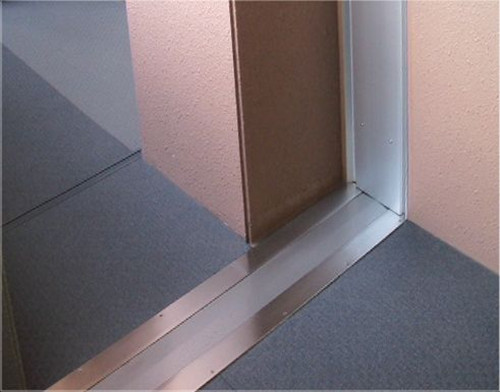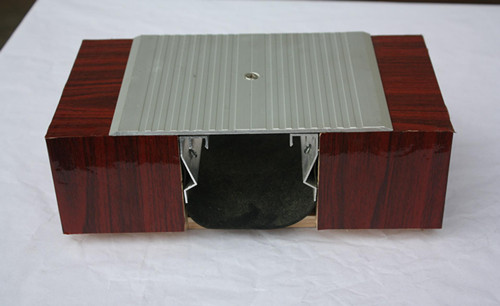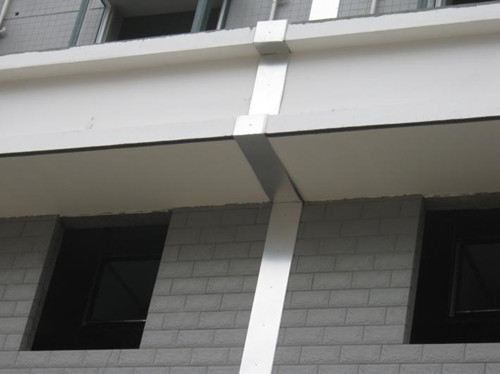Today I will explain the relevant knowledge of deformation joints. So, do you know what deformation joints are ? Deformation joints are the general term for expansion joints, settlement joints and shockproof joints. Buildings are often deformed by external factors, causing cracking and even destruction. Deformation joints are structural joints reserved for this situation. The traditional method is to use galvanized iron sheet, steel plate or aluminum plate on-site processing, construction is simple and rough, not only beautiful and short life, this technology has been unable to meet the development needs of the modernization of the construction industry. If you are still wondering what the deformation joints are , you may wish to follow me to learn about the deformation joints.

What is the deformation joint?
Deformation joints are mainly used in the field of construction. As the name suggests, deformation joints are mainly reserved for cracks in buildings due to external factors such as cracking and even damage.
As people build more and more houses and the structure becomes more and more complex, so magical deformation joints are produced in accordance with the development of the times. Its appearance provides the security for the houses we live in now. Certain protection has become an important part of our lives.
Deformation joint types
At present, deformation joints can be mainly divided into three categories: expansion joints, settlement joints, shock joints.
1. Expansion joints: Since some parts of the building may be affected by factors such as temperature and humidity, and expansion or contraction may occur, expansion joints are usually installed at appropriate locations in buildings to divide the building into several independent structures. Overall. The basic part of the building can be kept open because it is not affected by temperature and humidity. The distance between the expansion joints should be set according to different situations.
2. Settlement joints: Settlement joints are designed to prevent problems such as the disparity in the height of some buildings and the uneven distribution of load on the upper part of a building. In addition, settlement joints should also be provided if buildings are built on different foundation soils. Usually the settlement joint divides the building into several parts, and the parts are not connected to each other. Settlement joints are mainly installed in places where the height of the building is different and where the bearing capacity of the site varies greatly, and some of them are located between the joints of old and new buildings. The biggest difference between a settlement joint and an expansion joint is that the basic part of the building must be disconnected when setting the settlement joint.
3. Anti-shock seams: Anti-shock seams are mainly a type of seam that is provided to prevent earthquakes. The setting of the anti-shock seam requires dividing the building into several parts to form multiple anti-seismic units. The purpose is to prevent the entire large building from being uncoordinated due to vibration and easy to collapse when the earthquake occurs. Generally in the earthquake-proof area, the setting of expansion joints and settlement joints must meet the requirements of the anti-seismic joint setting.
Deformation joint application
For many buildings, they strive to combine expansion joints, settlement joints and shock-proof joints, ie, "Three Sutures One," to form a stable protective film for buildings.

How to calculate the deformation joint of the roof, the specific calculation method
Deformation joints include three kinds of temperature expansion joints, settlement joints and shockproof joints.
(1) Setting of deformation joint
1 expansion joint
Setting location: The setting spacing is related to roof and floor type, and the maximum distance is generally 50-75m. Expansion joint width is generally 20 ~ 30mm.
2 settlement joints
Locations: Corners of buildings with complex planar shapes; places where the height or load of the building is large; structures or types of bases are different; there are uneven settlements in the foundation soil;
Setting requirements: The width is related to the foundation conditions and building height, generally 20 to 30mm. The width of the building above the five-story building on the soft foundation should be increased appropriately. The superstructure and foundation at the settlement joint must be completely disconnected.
(2) Treatment of deformation joints
3 shockproof joints
Setting requirements: The width of the shockproof joint is related to the number of layers and the type of structure
Specific calculation method
Deformation joints are calculated in terms of extended meters. It depends on how long the deformation joints are drawn on the drawings. However, if the landlord is referring to the partitioning of the roof, it is necessary to consider the interval between sub-warehousing seams. Normally, the interval is set every 6 meters. Together. . The length is the actual length of the roof (buckle ditch, parapet)
Deformation joint calculation considerations
1. The distance between the expansion joints of the integral structural house should be taken according to the cast-in-place value in the table.
2. The distance between the expansion joints of the frame-shear or-simplified structural house can be taken as the value between the frame structure and the shear wall in the table according to the specific layout of the structure.
3. When there is no insulation or heat insulation measures for the roof, the shrinkage of the concrete is large or the exposed time of the interior structure is long due to the construction exposure, the gap between the expansion joints should be reduced according to the table or design in the table.
4, in a dry climate, hot summer and frequent storm areas, the expansion joint spacing should be appropriately reduced.
5, For burning ordinary bricks, perforated bricks, reinforced block masonry walled houses to take the values ​​in the table, to the value of stone masonry, autoclaved ash sand bricks, autoclaved fly ash bricks and concrete mud block houses to the table Multiply by a factor of 0.8.
6. Roofs that are tiled on reinforced concrete roofs should be used as reinforced concrete roofs.
7. The maximum distance between expansion joints of houses and building walls where the temperature difference is relatively high and in areas with frequent changes and that are not heated in severe cold areas should be appropriately reduced.

What are the characteristics and design requirements of deformation joints?
1, characteristics and use
The construction of deformation joint equipment is an industrialized and established product that combines practicality and decorativeness and is produced by a specialized chemical factory. It has the characteristics of exquisite workmanship, beautiful appearance, standardized goods, and long service life, and conceals the deformation joint of the building. Aspiring to build accessories. The developed countries in Europe and America have had decades of pre-production history. Since the beginning of the 1990s, some entrepreneurs in China have introduced technology from Germany and the United States to set up China's deformation joint equipment production enterprises. So far, they have become very sophisticated. The construction of commodities is widely used in the construction of airports, convention and exhibition bases, sports bases, medical bases, shopping malls, office buildings, and joint industrial plants. Due to the increasing selection of deformation joint equipment, the quotation is also falling. The Shanghai Pudong International Airport built in 1999 was selected by the United States for the import of deformation joint equipment, which costs about RMB 3,000 per meter. In 2004, the new airport in Guangzhou was built using domestically produced deformation joint equipment, which costs approximately RMB 1,000 per meter.
2, planning specifications
In order to facilitate the use of deformation joint equipment by the extensive architects during the planning, the Chinese Institute of Construction Planning and Research has published and published the “Deformation Joint Construction Structure†(04CJ01-1--3) in January 2004. . All provinces, municipalities, and regions also successively published and issued plans for the construction of a standardized plan.
3, planning request
If the installation of water-stopping belts, fire-resisting belts and heat preservation belts in the construction of deformation joint equipment can also make the deformation joint equipment satisfy the planning requirements of waterproofing, fire prevention and heat preservation. The use of EPDM rubber sheets with a thick l.2mm seal can be used for a long period of time under sunlight, moisture, and cold natural conditions. The fire-resisting belt is a special fitting composed of two layers of stainless steel liners sandwiched between aluminum silicate fire-resistant fiber mats. The two sides of the fire-resistance belt are fixed with the main body structure of the building. Fire resistance belt can meet the request of 1-4h not the same fire limit.
4, data composition
In order to fully understand the deformation joint equipment, the composition, type and application status are briefly described as follows: The deformation joint equipment is made of aluminum alloy profiles, aluminum alloy plates (or stainless steel plates, copper plates), centrally controlled slide bars, rubber molded bars and All kinds of special strips and other components. During this time, rubber products are required to have excellent fatigue resistance, low temperature resistance, compression deformation resistance, UV resistance, and waterproof properties.
Editor's summary: The above is a description of what type of deformation joints deformation joints and application of related knowledge, hope to help meet the needs of friends! For more information, please continue to pay attention to our website, follow-up will show more exciting content. You can also purchase your favorite product on Qijia Mall!
Home Renovation Designers Expansion Joints Home Construction Services Home Improvement Notice Matters
Die Casting And Cnc Machining,Hydraulic Oil Cooler,Elevator Hydraulic Oil Cooler,Sluminum Lamp Parts Metal
JIANGSU TONGDE INTERNATIONAL TRADE CO.LTD. , https://www.tongdetrades.com